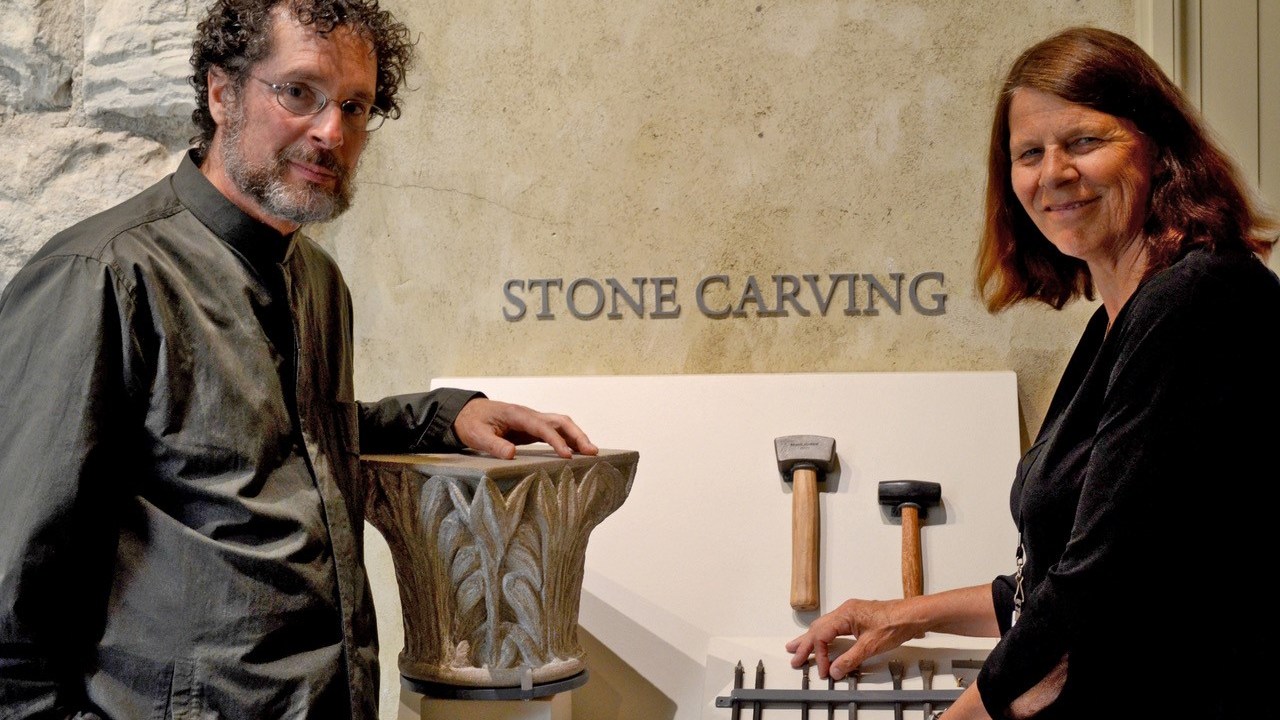
THE VISION
With the arrival of a new director in 2011, the board envisioned a more accessible and inclusive museum providing physical, sensory, intellectual, aesthetic, and social access for everyone. The board also aspired for the museum to appeal to a more broad audience, including the next generation of visitors; new immigrants from Brazil, Vietnam, and Ghana; and 30,000 students from 13 local colleges. The community surrounding the Worcester Art Museum (now known by its acronym, WAM) has changed a lot since the museum’s 1898 Victorian-era beginnings.
Mattias Waschek, formerly of the Pulitzer Art Foundation and Musee du Louvre, was selected to lead the museum and its collection of more than 35,000 works representing more than 50 centuries, the second-largest fine arts museum in New England.
He eagerly embraced the board’s vision.
THE OPPORTUNITY
In 2013, the state arts agency, the Massachusetts Cultural Council (MCC), mounted an ambitious campaign for inclusivity, accessibility, and universal design with the Universal Participation (UP) initiative, to inspire organizations to be more welcoming and accessible—across the spectrums of ability, age, and culture—in designing programs and spaces.
Three miles away, the Higgins Armory Museum—devoted exclusively to arms and armor—attracted 60,000 visitors each year, including generations of local families. Despite its beloved status, the Higgins Armory Museum could not sustain a stable budget and was slated for closure. Could the Higgins’ misfortune be an opportunity for WAM to reach new audiences?
THE STRATEGY
Enter the Institute for Human Centered Design (IHCD), an international nonprofit dedicated to inclusive design. WAM was clearly paying keen attention to accommodating visitors with physical disabilities, but IHCD encouraged them to consider that sensory and brain-based conditions are rising though often not acknowledged by immigrants and young adults that WAM sought to entice. IHCD stressed that giving every visitor options for engagement beyond the visual would deliver the most broadly accessible and memorable exhibition.
MCC and IHCD collaborated on a multifaceted strategy with organizations—and their boards—for training, mounting model projects, and research
WAM was an early and enthusiastic member of the UP initiative. Though limited in scope, WAM’s review highlighted the challenges of blind and low-vision visitors.
The museum hosted the inaugural UP opening reception and daylong kickoff meeting.
This coincided with WAM’s “Knights!” exhibition, conceived and organized by Waschek, which integrated elements of the Higgins collection—including the Higgins mascot, Helmutt, a little black and white dog, suited in armor—and attracted new audiences.
The image of Helmutt (a mutt, of course) appeared at child height with illustrated signage, inviting young visitors use interactive iPad stations. His paw print displayed throughout the museum advised what could be touched.
WAM’s quest to be more welcoming took a literal turn when the museum determined that it needed a new entrance. (The inaccessible main entrance had been closed for years due to lack of funding. An accessible back entrance brought visitors past the dumpster.) The museum commissioned wHY Architecture to design a new accessible walkway—a bridge angled across the front façade. It broke the symmetry, announced that something new was afoot, and delivered an accessible yet edgy option. The Massachusetts Cultural Council partially supported the project with a Cultural Facilities Fund grant award.
THE RESULT
IHCD shared a set of resources with the team. It included: baseline guidance on accessible exhibits to ensure that visitors could access exhibits regardless of physical, cognitive, or sensory challenges; instructions for audio description, which gives people who are blind or have impaired vision a more complete picture of what is being shown; and articles exploring effective tactile experiences and global precedents such as the tactile galleries at the Louvre and the interactives at the National Portrait Gallery in London.
Museum staff embraced the challenge of reinventing the galleries one at a time, starting with the 1950s-era medieval galleries, which could absorb some of the Higgins collection. Two curators led an internal, multidisciplinary team and emphasized that it was critically important to the process that there was no hierarchy on the team, that all perspectives would be considered equally. The team developed multisensory and interactive exhibits on the medieval arts of stone carving, enameling, and metalworking, including making armor. They offered visitors the chance to touch, heft, and smell the unfamiliar materials and tools of a distant time. Touch tablets offered stories about these trades in greater detail. Padded window seats are ideally placed next to an interactive exhibit that’s a magnet for children.
Since 2011, WAM’s attendance has nearly doubled. More than 1,000 people attended the opening family weekend of the reinstalled medieval galleries. The WAM Interactive Qualifying Evaluation conducted by Worcester Polytechnic Institute compares data from April 2016 and April 2017, reporting that dwell times in the new galleries were twice those of the original installation. The appeal of multisensory and interactive exhibits proved high with all audience categories.
Waschek acknowledges that museums that belong to everyone require everyone in the organization play a role. “In my mind, curators are fully rounded only if they care for visitors; educators are only fully rounded if they care for the collections,” he said.
About the Author
Valerie Fletcher has been Executive Director of the Institute for Human Centered Design (IHCD) since 1998. Fletcher writes, lectures and works internationally. She currently oversees projects ranging from the development of a new national website on accessibility and inclusive design in cultural facilities for the National Endowment for the Arts to a wide range of consultation and design services to public, and private entities in the US and globally. She created the IHCD User/Expert Lab which has over 200 people engaged in the evaluation of places, products, and services. Her research focus is integrated social and environmentally sustainable solutions for multifamily housing, healthcare, culture, workplaces, and the public realm. Her research focus is integrated social and environmentally sustainable solutions for classrooms, workplaces, cultural venues and the public realm.








I’ve been to this museum!